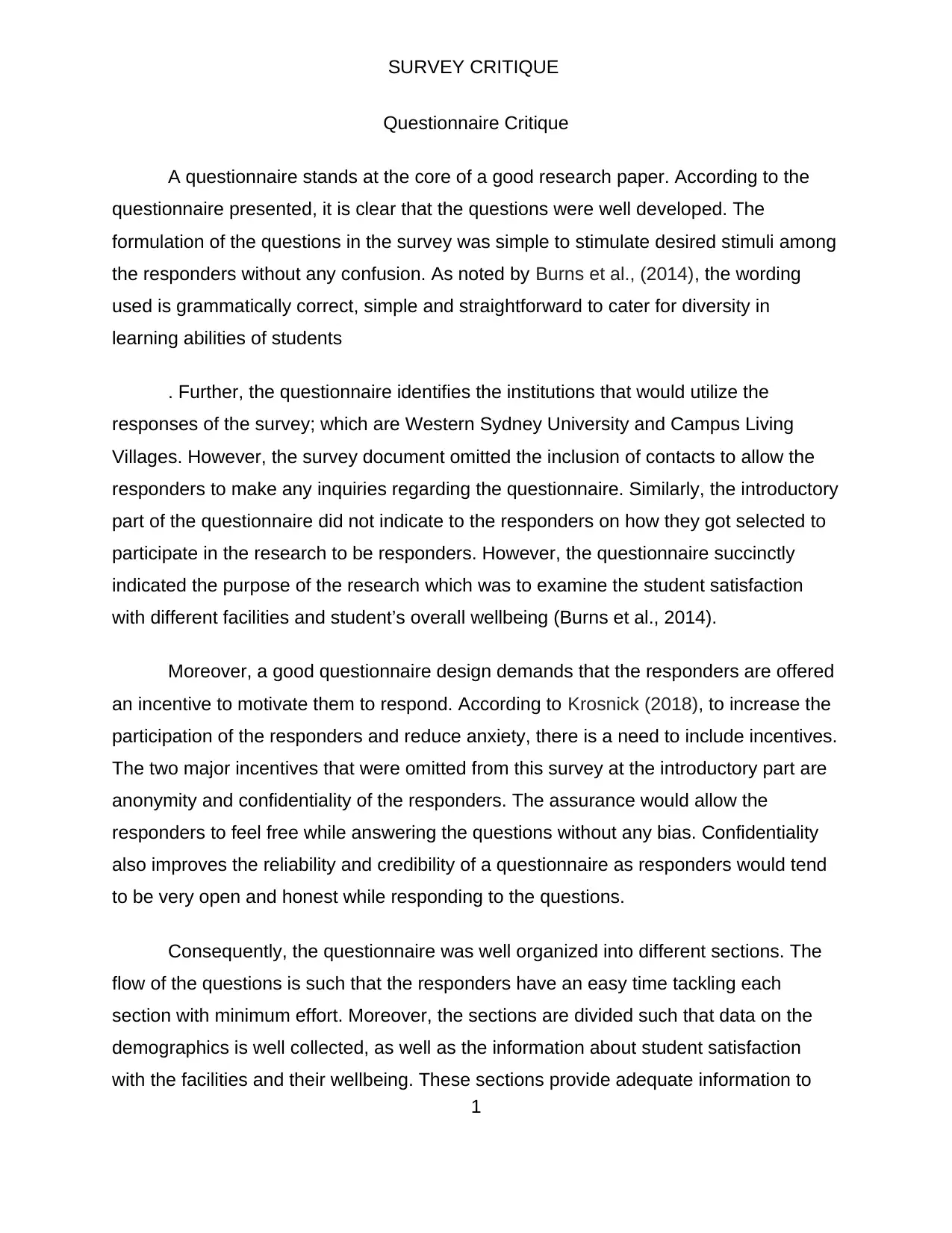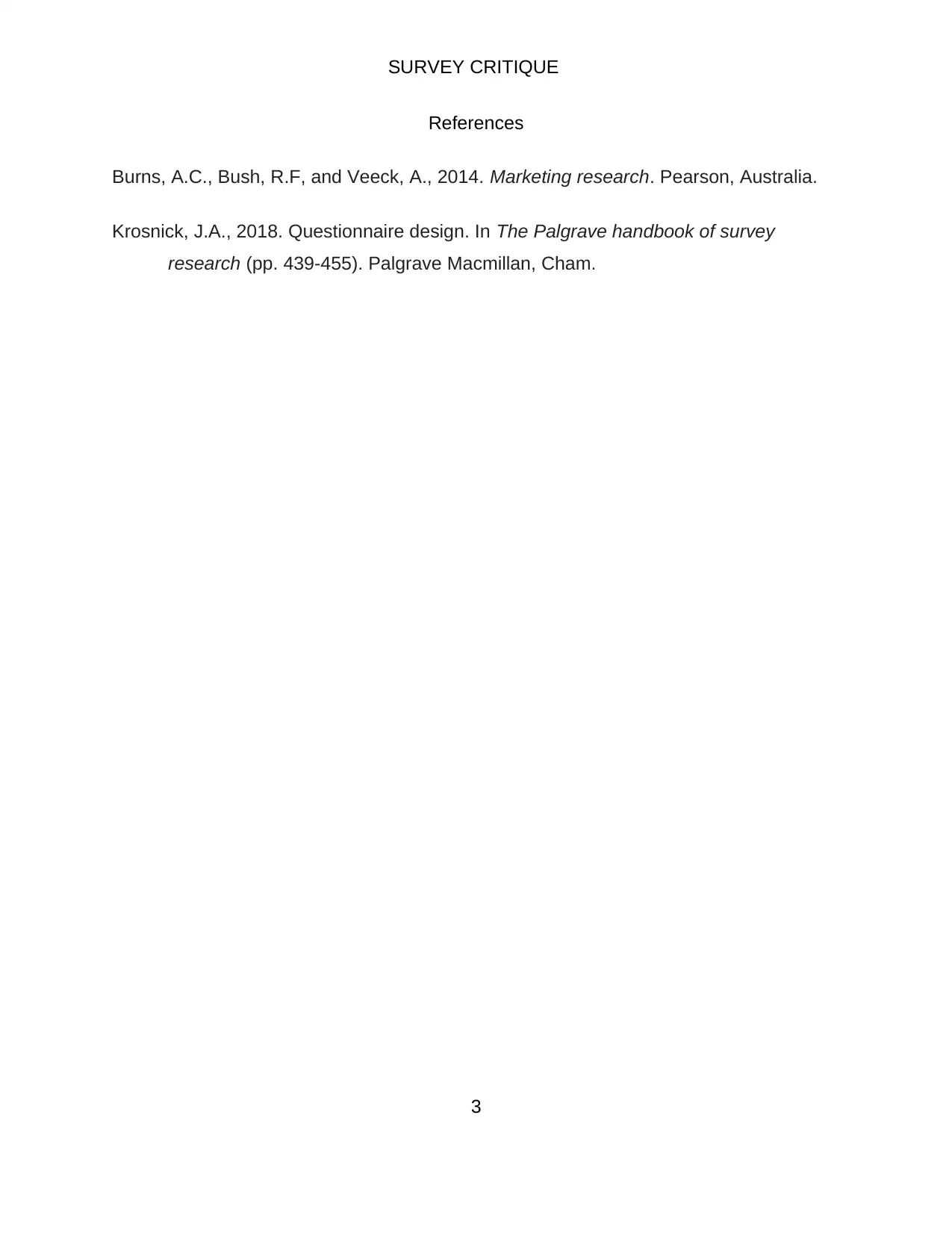Western Sydney University: Questionnaire Critique Report
VerifiedAdded on 2022/11/17
|3
|629
|75
Report
AI Summary
This report provides a critical analysis of a survey questionnaire designed to assess consumer perceptions of SumoSalad and healthy eating. The critique evaluates the questionnaire's strengths, such as its clear question formulation and organization, as well as its weaknesses, including the lack of contact information, insufficient incentives for respondents, and the use of leading questions. The analysis highlights areas for improvement, such as expanding the introduction, refining question wording, and incorporating anonymity and confidentiality assurances to enhance respondent participation and data reliability. The report references key marketing research principles and relevant literature, including works by Burns et al. (2014) and Krosnick (2018), to support its observations and recommendations. Overall, the critique offers valuable insights into questionnaire design and its impact on research outcomes, emphasizing the importance of clarity, ethical considerations, and respondent motivation in the data collection process.
1 out of 3










![[object Object]](/_next/static/media/star-bottom.7253800d.svg)